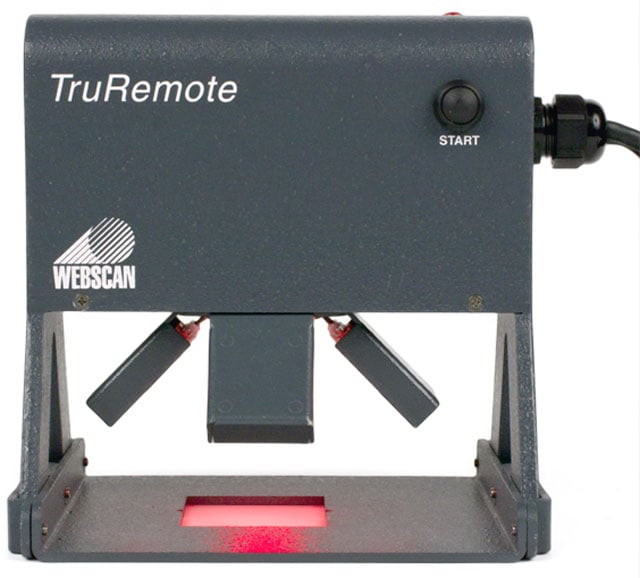Selecting a WebScan Verifier Calibration Card
 Accurate barcode verification is key to avoiding issues with large customers like Walmart and the DoD as well as the costly fines involved with non-compliance. In addition to having the right verifier, regular calibration of your verifier is essential to consistent performance.
Accurate barcode verification is key to avoiding issues with large customers like Walmart and the DoD as well as the costly fines involved with non-compliance. In addition to having the right verifier, regular calibration of your verifier is essential to consistent performance.
All of the verifiers from Webscan are easily maintained with their various calibration cards but for many people the cards are somewhat of a mystery. In the following some of the key questions that come up with verifier calibration are covered to get you started on your way.
Why do I need to calibrate?
Calibration is the process of the adjusting Reflectance levels. Checking these levels routinely will ensure that you’re getting the most accurate results.
Do I need to calibrate more than once?
Every company has their own policy on how often you should calibrate, at Webscan we recommend you do it every 30 days.
How often should I replace my calibration card?
Calibration cards expire after 2 years from the date of issue. Calibration is important for industry standard compliance. If your calibration card is expired, contact Webscan for purchasing information.
Do I need to calibrate my verifier with both 1D and 2D symbols?
With 2D verifiers (such as a TruCheck Optima or TruCheck Omni), you can choose either a “2D Calibration Card” or a “Linear Calibration Card”. Either of them will allow you to calibrate the reflectance levels which is what calibration does. Importantly, calibration is not specific to the symbology and once the verifier is calibrated using either type of calibration target, the verifier is calibrated for both 1D and 2D barcodes. However, for 1D verifiers, such as TruCheck Laser USB which do not work on 2D barcodes, only a “1D Calibration barcode” can be used.
What 1D symbol should I choose for my linear verifier?
You’ll want to select the barcode symbol that aligns up with the laser size of your verifier. For instance, if you use a 6mil laser than you’ll want to select a card with 6mil symbols, like a UPC/EAN card. If you’re using a 20mil laser then you need an ITF-14 20mil card.
What makes the Webscan calibration card different?
The Webscan calibration card (part number 5136) contains both types of calibration target symbols and can be used to calibrate either type of verifier. The calibration target symbols on the Webscan calibration card are “Master” symbols, similar to the master symbols on the GS1 UPC/EAN card and GS1 Data Matrix card. The Webscan calibration card can be used to calibrate and check your calibration values (Rmax and Rmin).
What is Conformance Testing and should I be doing it?
Conformance testing is different from calibration. Conformance testing is not needed, but sometimes people desire to check that their equipment for conformance. This is why people use calibration cards that include test symbols. However, many calibration target cards can also be used for “Conformance Testing”. Conformance Test Symbols are barcodes produced with intentional defects that give lower than perfect grades. The GS1 Data Matrix calibration card contains Data Matrix symbols with intentional imperfections that you can measure with the verifier to check the reporting capabilities of the verifier and to document conformance to industry standards such as ISO/IEC 15415 and ISO/IEC 15426-2 and GS1 specifications. The GS1 UPC/EAN Card contains UPC/EAN symbols that contain intentional imperfections that you can measure with the verifier to check the reporting capabilities of the verifier and to document conformance to industry standards such as ISO/IEC 15416.
How do I calibrate my Webscan barcode verifier?
Click here to find out How to Calibrate Your Webscan Unit (User Manual Excerpt)




